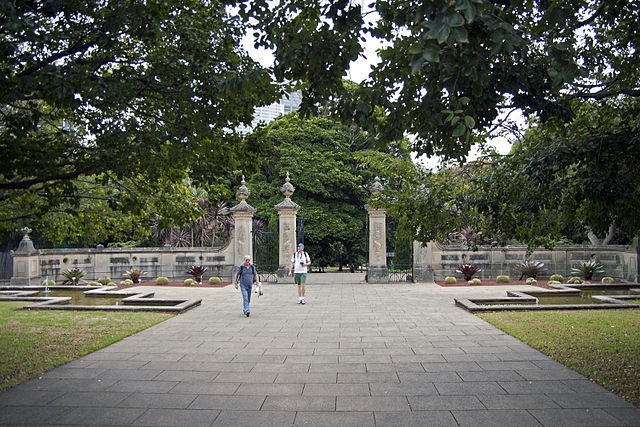The history of Royal Botanic Gardens spans centuries and continents, showcasing a rich tapestry of botanical exploration, research, and conservation. Let’s embark on a botanical journey through the history of some prominent Royal Botanic Gardens around the world:
1. Royal Botanic Gardens, Kew (London, United Kingdom):
- Foundation: Established in 1759, the Royal Botanic Gardens, Kew, is one of the oldest and most renowned botanical institutions in the world. It was founded by Princess Augusta, the widow of Frederick, Prince of Wales.

- Notable Features: Home to iconic structures like the Palm House, Temperate House, and the Kew Pagoda, the gardens boast a vast collection of plants, including rare and endangered species. The Kew Herbarium and the Millennium Seed Bank contribute to global plant conservation efforts.
2. Royal Botanic Garden Edinburgh (Edinburgh, Scotland):
- Foundation: Founded in 1670 as a physic garden, the Royal Botanic Garden Edinburgh expanded over the centuries and received its “royal” status in 1959.
- Scientific Contributions: The Edinburgh garden is known for its scientific research, conservation efforts, and educational programs. It houses a diverse range of plants, alpine collections, and a renowned rock garden.
3. Royal Botanic Gardens, Melbourne (Melbourne, Australia):
- Foundation: Established in 1846, the Royal Botanic Gardens in Melbourne is one of the oldest public gardens in Australia.
- Cultural Significance: Beyond its botanical significance, the Melbourne Gardens host cultural events, educational programs, and the Aboriginal Heritage Walk, providing insights into Indigenous Australian plant use.
4. Royal Botanic Gardens, Sydney (Sydney, Australia):
- Foundation: Founded in 1816, the Royal Botanic Garden in Sydney is located in the heart of the city near the iconic Sydney Opera House.
- Historic Features: The Sydney Gardens feature historical landmarks like the Palm House, the Rose Garden, and the Calyx. The gardens play a pivotal role in plant conservation and research.
5. Royal Botanic Garden, Madrid (Madrid, Spain):
- Foundation: Established in 1755, the Royal Botanic Garden in Madrid was founded by King Ferdinand VI.
- Architectural Marvels: The Madrid Gardens boast architectural marvels like the Crystal Palace and the Velázquez Palace. They showcase a diverse collection of plants, including tropical and desert species.
6. Royal Botanical Gardens, Peradeniya (Kandy, Sri Lanka):
- Foundation: Established in 1821, the Royal Botanical Gardens in Peradeniya, Sri Lanka, were initially a pleasure garden for Kandyan royalty.
- Exotic Flora: The gardens showcase a stunning collection of orchids, palms, and medicinal plants. The avenue of royal palms is a notable feature, creating a majestic entrance.
7. Royal Botanic Garden, Córdoba (Córdoba, Spain):
- Foundation: Founded in 1765, the Royal Botanic Garden in Córdoba, Spain, has a history deeply rooted in the Enlightenment period.
- Historical Significance: The gardens feature a herbarium, greenhouses, and a wide variety of plant species. They reflect the era’s scientific curiosity and botanical exploration.
8. Royal Botanic Garden, Jordan (Amman, Jordan):
- Foundation: Established in 2005, the Royal Botanic Garden in Jordan is a relatively new addition to the list of royal gardens.
- Conservation Focus: The Jordan Gardens emphasize the conservation of native plant species, sustainable agriculture, and education. They play a crucial role in promoting environmental awareness.
9. Royal Botanic Garden, Meise (Meise, Belgium):
- Foundation: Originally founded in 1796, the Royal Botanic Garden in Meise underwent transformations and expansions over the years. It received its “royal” status in 1870.
- Plant Collections: The Meise Gardens house an extensive collection of plants, including notable specimens in the Plant Palace. The gardens contribute to scientific research and conservation.
10. Royal Botanic Gardens, Hobart (Hobart, Australia):
- Foundation: Established in 1818, the Royal Botanic Gardens in Hobart, Tasmania, are among the oldest botanical gardens in Australia.
- Botanical Diversity: The Hobart Gardens showcase a wide variety of Tasmanian and Southern Hemisphere plants. Notable features include the Subantarctic Plant House and the Japanese Garden.
The Royal Botanic Gardens worldwide have played a pivotal role in botanical research, plant conservation, and public education. These green sanctuaries continue to evolve, reflecting a deep commitment to preserving biodiversity and promoting a deeper understanding of the plant kingdom.











